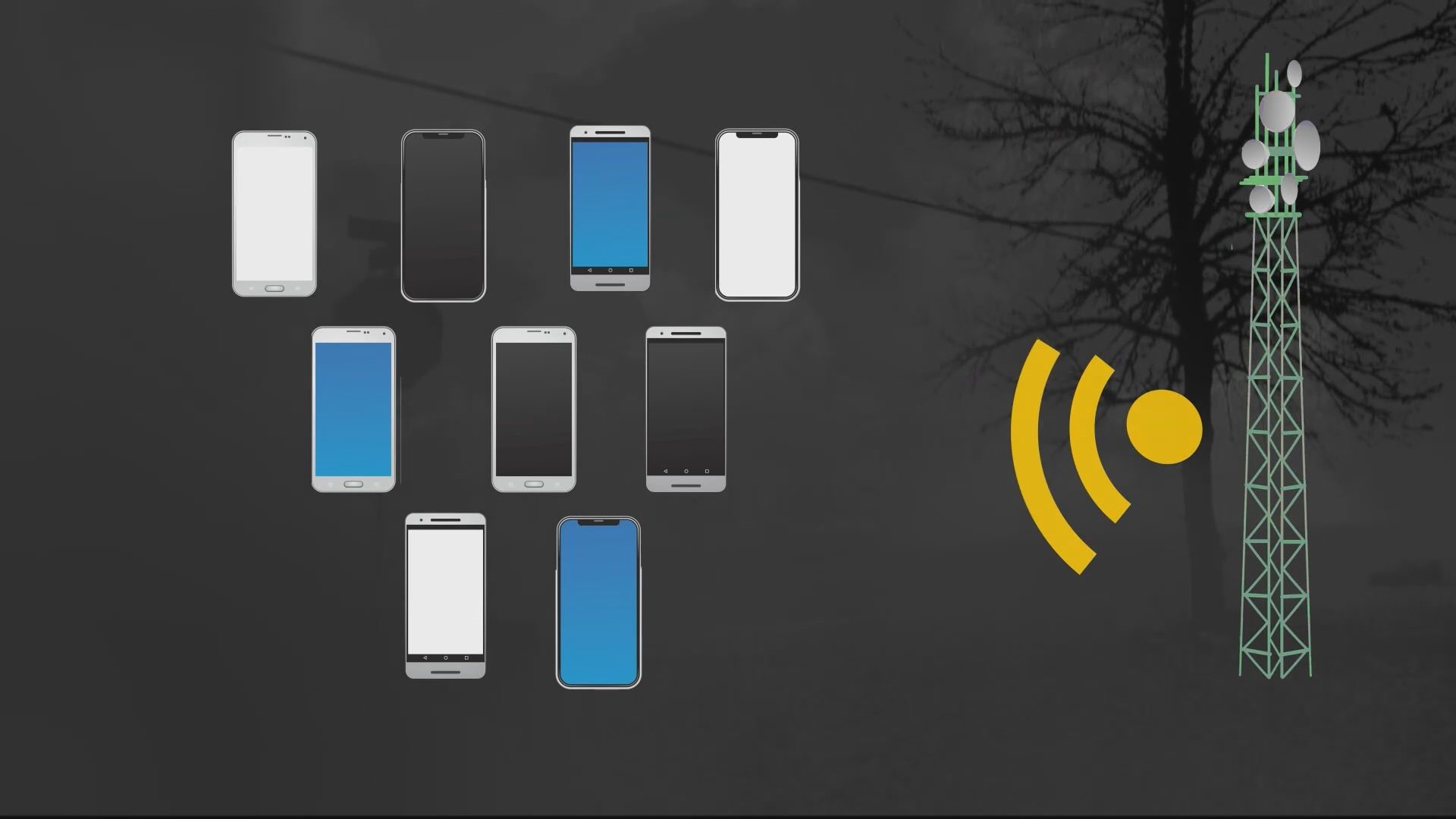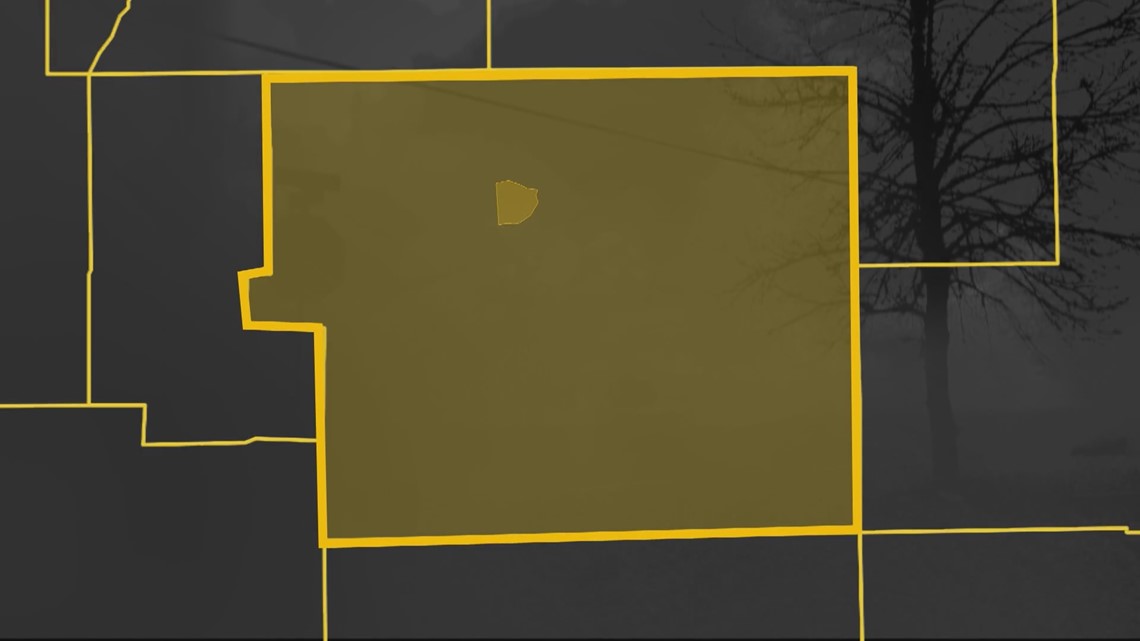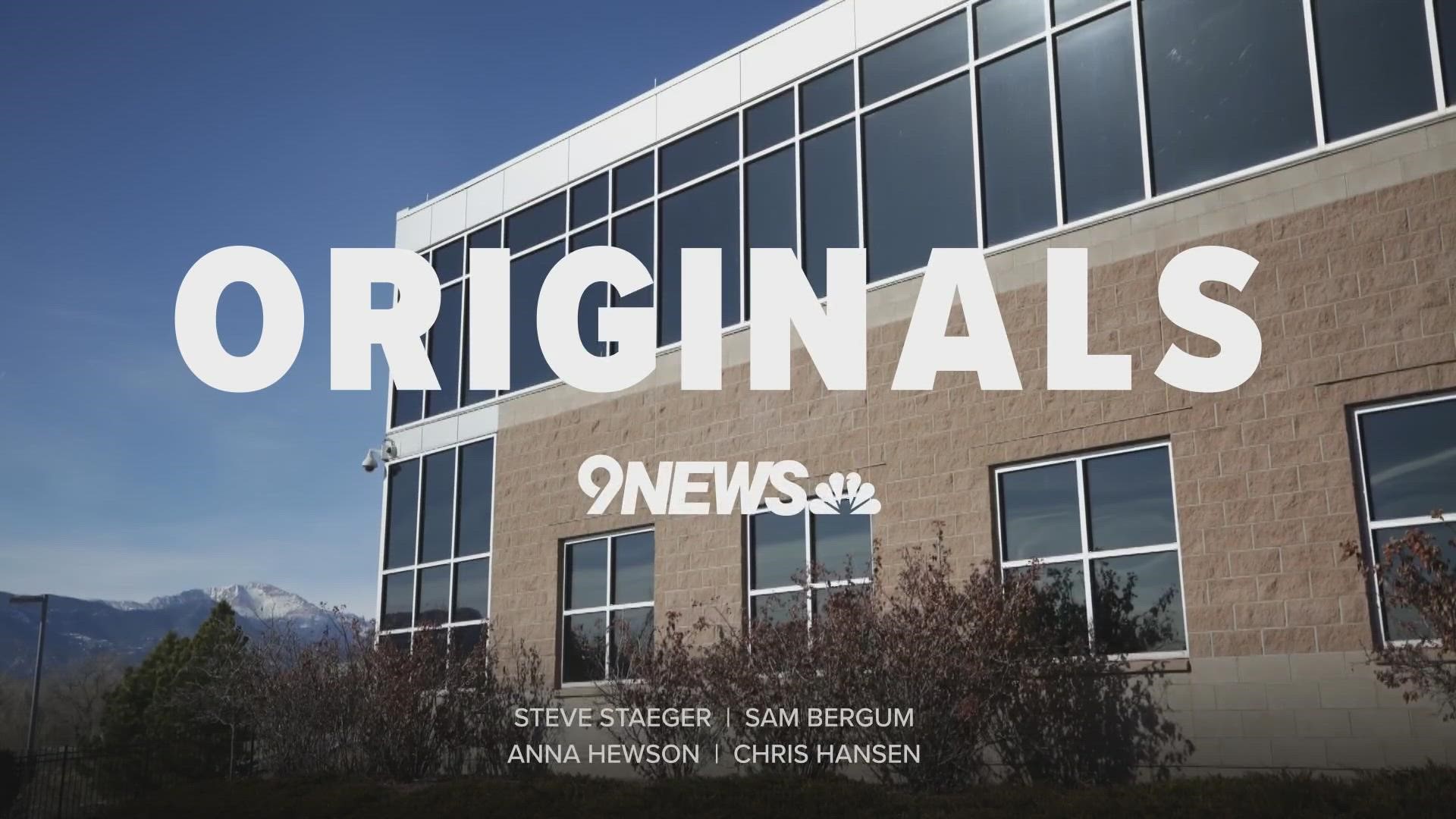Limitations with wireless alert system complicate evacuations
A 2022 wildfire in Colorado Springs highlighted the technical limitations of the nation’s Wireless Emergency Alert system.

Too much information
It’s a dangerous combination Colorado knows too well: strong winds, low humidity and a spark in the wrong place. On May 12, firefighters in Colorado Springs raced to put out multiple fires threatening neighborhoods across the city, while 911 operators across several Colorado counties tried to contain a message also spreading like wildfire.
It started in the Stetson Hills neighborhood. A fire in a drainage ditch was threatening homes.
“We’ve got fire behind these houses and running,” a firefighter told dispatchers. “Start evacuating the homes on Summer Grace.”
Firefighters called for evacuations for about six blocks of homes to the west of the drainage ditch. As fire crews asked for more resources to protect homes from what would be dubbed the Akerman Fire, 911 operators wrote up the alert. They drew a shape around the neighborhood on a map to limit where the message would go, and sent out the evacuation notifications through the federal Wireless Emergency Alert system, or WEA.
The system, which is responsible for AMBER Alerts, sends notifications to all cell phones in a geographic area as drawn on a map. It’s distinct from opt-in alert systems that rely on databases of cell phone and landline records in addition to signups from people in the area.
The WEA system is likely to reach more people. On May 12, it did exactly that.
Ben Bills, who runs the 911 authority for El Paso and Teller counties, remembers the chaos that came after dispatchers hit “send” on the alert.
“The phones rang off the hook here,” he said. “Our 911 centers in this region were crushed. And it wasn’t just for a quick half an hour. This was an all-day affair. They were extremely busy for hours.”
The alert, meant for a few hundred homes, went instead to the entirety of El Paso County, with a population of 737,000.


The message didn’t stop at the county line. People received the emergency alert in Pueblo, Douglas County and even 55 miles north in Conifer.
Dispatchers, who were already managing multiple wildfires in Colorado Springs, suddenly had to manage phone calls from confused people in five counties.
“It went pretty darn far,” Bills said.
An imperfect system
It took two issues to turn a small alert into a massive one.
First, a drawing problem. The dispatchers crafting the alert drew a shape with too many lines. The WEA system can only handle up 100 vertices, or points where two lines meet.
“The WEA system wants a very simple defined shape,” Bills said. “Squares, rectangles, even a circle can sometimes work. We had too intricate of a shape outlining individual streets in a residential neighborhood.”
Dispatchers’ attempt at precision befuddled the alert system. Instead of sticking to the original boundaries, the system defaulted to sending an alert to the entire county.
The other problem was one emergency managers have come to expect. The technical limitations of the WEA system mean alerts often go a bit beyond their intended area.
Newer phones can be geo-targeted within a tenth of a mile. They receive an alert from the cell tower they’re currently tied to, compare the alert’s geographic information with their location and decide whether to display the alert.
Older phones, or phones with location services turned off, are not as precise. About 40% of cell phones in the U.S. still have this older technology, according to cell industry trade group CTIA, making so-called “bleedover” or “over-alerting” a common, even anticipated, occurrence with WEA.
“It’s hard for us to tell if something’s gone farther than intended until we’ve already pressed the send button,” Bills said.
In this case, the alert went to every cell tower reaching El Paso County, and older phones outside the county couldn’t filter it out.
Driving solutions
It’s an extreme example of a limitation emergency managers in Sonoma County, California have come to know well. In 2020, faced with a series of wildfires, the county sent more WEAs than any other local jurisdiction in the country.
Chris Godley, the director of emergency management for the county, has spent years developing their alert and warning strategy.
“We’re making use of imperfect technologies,” he said. “It's very stressful because you're concerned that you may over-warn people, that you may send the wrong message to the wrong people at the wrong time, or you may fail to check a box and people don't get the Spanish version of that message.”
Godley has tried several approaches to limit the risk of alerting failures. He prioritized regular, public-facing tests of the system to raise public awareness and discover issues. He worked with cell phone companies when tests showed some carriers had significant bleedover while others weren’t reaching the entire targeted area. The county hired more staff to focus on WEA policy and strategy. Godley’s office prioritized public education so neighbors understood the limitations of the system.
“We've been able to develop very thorough procedures, and every week we test our staff on how to activate these systems, but it's still very stressful,” Godley said. “We'd like to see a more unified approach to integrating these technologies.”
When the WEA system launched in 2012, it was voluntary for cell phone companies to participate. Now, all the big companies do, and companies that don’t are required to tell their customers. Over the years, updates to WEA technology allowed newer phones to receive longer messages, show messages in Spanish and apply more precise geo-targeting. But emergency managers like Godley are frustrated by the lack of consistency between carriers and lack of feedback after an alert is sent.
“[The cell phone companies] are doing a good job,” Godley said. “If we ask them to send a warning message, they'll do that. But what we'd like to see is a bit higher performance standards for both the telecommunications companies and the device manufacturers.”
It’s within the Federal Communications Commission’s power to set standards and policies for WEA. In the spring of 2022, the FCC opened comment on potential improvements to WEA.
> Related: Wireless emergency alerts need fine tuning, but systems aren't there yet
Emergency managers and 911 authorities from Adams, Arapahoe, Boulder, Jefferson and Larimer Counties responded, asking the FCC to require older phones be updated to more current and geographically-precise WEA technology. They also asked for cell phone companies to provide real-time data showing where WEA messages are received, and to change the limit on vertices that went so wrong in Colorado Springs.
"Partnering with local fire and law agencies prior to an emergency to develop polygons that can be preloaded in the emergency notification software reduces or eliminates the polygon development time,” they wrote, referring to pre-loaded shapes for individual neighborhoods meant to take the on-the-fly drawing out of the process and speed up the sending process. “The result leads to intricate polygons that contain hundreds or thousands of vertices… Such predetermined polygons are virtually unusable in the current system implemented today.”
In December, an FCC council report on potential mechanisms to provide feedback about where WEAs are received concluded much of the data requested by emergency managers is either impossible to acquire or so imprecise as to not be useful.
The report ultimately suggested allowing people to opt-in to allowing their phones to report back some data each time they receive a WEA, but not to mandate the kind of mass-reporting emergency managers like Godley and the Colorado agencies asked for.
“There's no money tied to it, so no one's going to invest a lot of energy into it. It takes failure to drive change,” Godley said.
“Literally millions of lives depend on the technologies here. It's no longer a luxury to have a cell phone. This is how we live now. And so we need to make sure these systems can perform at that public safety standard where people have the same confidence that they'll get those warnings as they would if they had to call 911… We want literally the same level of performance on our warning side of the house.”
Temporary fixes
Godley in California and Bills in Colorado Springs agree the limitations of WEA are not reasons to avoid the system.
“I would stand here and tell anybody that I’d rather have the conversation that we notified you of an emergency and might have caused you some confusion or concern that it might not have pertained to you – rather than have the discussion that someone was hurt or worse because they weren’t notified,” Bills said.
Since the unintentional countywide alert, Bills’ team has adjusted procedures to encourage simpler shapes - squares, rectangles and circles - to avoid repeats of the error.
“I don’t think [the WEA system] is broken. I think it works as intended,” Bills said. “But I think if we’re going to start using it for public safety emergencies like fires or active shooters, there needs to be a pretty big public information campaign to people in your communities that says ‘Hey, this is a tool we’re going to start using. Take these actions if you receive a message.’”
“We tell our residents we're going to do our best to warn you. But we may not be able to,” Godley said. “You need to be able to connect with your neighbors, your residents, and find other ways to get that information that you need.”
“We know it’s not perfect. There’s no perfect emergency notification system. There’s no perfect way to isolate every single person in just one little zone, because there are too many factors that go into it,” Bills said. “We’re going to use the tools available to us to be able to move people when we need to move them and we’ll deal with anyone who wants to discuss that after the fact.”
SUGGESTED VIDEOS: Wildfires in Colorado


